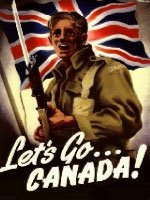“There
were many, many fine reasons not to go, but attempting to climb Everest is an
intrinsically irrational act—a triumph of desire over sensibility. Any person
who would seriously consider it is almost by definition beyond the sway of
reasoned argument.”
Jon Krakauer, journalist for the adventure magazine Outside, was hired to document an
expedition to Mt. Everest in 1996. What he couldn’t know was that by the end of
the expedition, eight people would be dead and he would be left with a very
different story than what he originally planned.
We begin with the victory of Krakauer summiting the mountain,
quickly followed by ominous words that presage what’s to come. But instead of
heading straight into the disaster we know is coming, we’re given a history
lesson on Mt. Everest instead. The book provides a mass of information on the
dangerous of climbing and what summiting Everest requires in terms of equipment
and fortitude. It also touches on Mallory and Irvine and Hillary and Norgay,
building a solid foundation on the history of the mountain and how climbing has
evolved over the years. Today it’s a commercial operation where inexperienced
clients can add to the risk of climbing, endangering not only themselves but
also guides and Sherpas.
In stories where the outcome is already known the ‘what’ becomes
less important than the ‘why’ and ‘how’. Before reading this book I already
knew it involved death and that things were going to go very wrong for a large
number of people trying to ascend the mountain. This left me to discover the
details around the larger story. Told in hindsight, it creates a growing
anxiety as an accumulation of small problems and mistakes leads our climbers
towards a slow but inevitable plod towards doom. It was unnerving, knowing some
of the people I was reading about would never go home, that I was essentially
reading about ghosts.
Finishing this book I was left with one question. What is a
human life worth? I already knew the story was a tragedy but I had no idea how
the actions of some climbers would horrify and depress me. The actions and
mistakes made along the way were one thing but to discover that climbers were
left for dead, that others passed them by on the way to the summit or believed
they were beyond help was sickening. It seemed callous and possibly criminal to
make no attempt at saving a fellow climber and human being. The excuses made in
the book were myriad. “We didn’t know them.” “It’s dangerous to help others at
this altitude.” “I was worried for my own life.” But at what point does someone
become culpable? They may not have had an active hand in their deaths but what
if they could have been saved? Krakauer on other dwell on this, second-guessing
themselves, wondering what might have been.
“The
plain truth is that I knew better but went to Everest anyway. And in doing so I
was a party to the death of good people, which is something that is apt to
remain on my conscience for a very long time.”











































